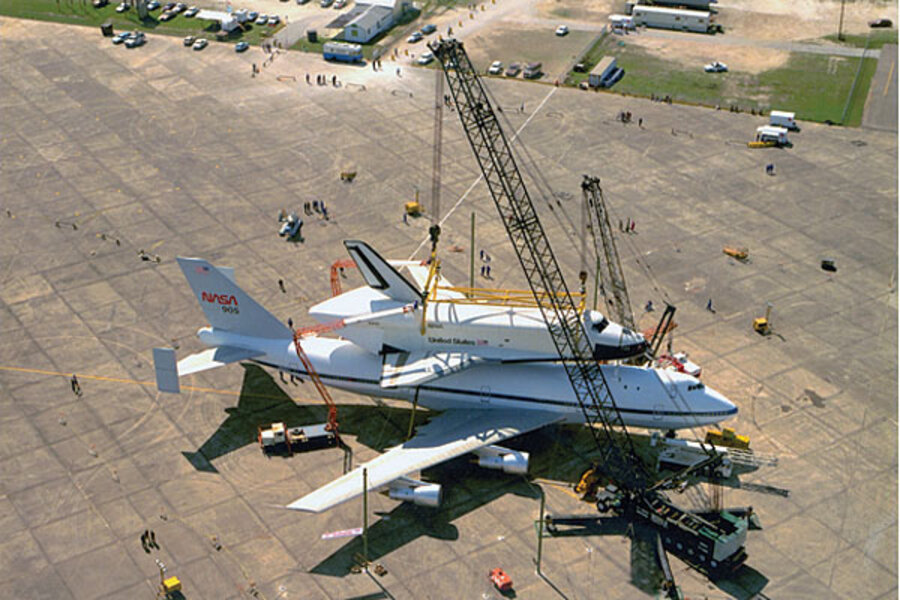How do they remove the Space Shuttle Discovery from its carrier aircraft?
Loading...
| Chantilly, Va.
The space shuttle Discovery will be hoisted off its ferry plane today (April 18) in a complicated ballet of cranes.
The orbiter is currently perched atop a modified Boeing 747 jet that carried it from Florida to Virginia yesterday. The two aircraft flew from NASA's Kennedy Space Center in Cape Canaveral to the Dulles International Airport early Tuesday (April 17) to deliver Discovery to the Smithsonian, where it will end its days as a museum exhibit.
Today, the retired shuttle orbiter will be separated from its carrier plane in preparation for being towed to the Smithsonian's Stephen F. Udvar-Hazy Center here on Thursday (April 19).
Discovery was attached to the jet, called the Shuttle Carrier Aircraft, by three strong struts on the plane's fuselage. Those must be disconnected in a process called "de-mate" before the orbiter can be lifted off. [Photos: Shuttle Discovery Flies to Smithsonian]
Two giant steel cranes will loft Discovery into the air so that the Shuttle Carrier Aircraft can back out beneath it. Then the orbiter's landing gear wheels will be extended and the cranes will set Discovery onto the ground.
The National Air and Space Museum is planning a big "Welcome Discovery" celebration for Thursday, when the orbiter will be towed from the Dulles airport to the Udvar-Hazy Center nearby. The public is invited to the event, which will feature music, astronauts and activities for all ages starting at 8 a.m. EDT.
Discovery will be wheeled into the museum's huge hangar facility, to take its place temporarily beside its sister shuttle Enterprise. That orbiter was built as a prototype shuttle, and never made it to space. It has been on display at the Smithsonian since 2003, but now is set to be replaced by Discovery. The Enterprise will soon go on view at Manhattan's Intrepid Sea, Air and Space Museum.
The same carrier plane that transported Discovery here is set to take Enterprise to New York on Monday (April 23), weather permitting.
Of the three space shuttles that NASA retired in 2011, Discovery is the first to be sent to a museum. The other remaining flown orbiters, Endeavour and Atlantis, are due to take their places later this year at the California Science Center in Los Angeles and the Kennedy Space Center Visitors Center in Cape Canaveral, Fla., respectively.
You can follow SPACE.com assistant managing editor Clara Moskowitz on Twitter @ClaraMoskowitz. Follow SPACE.com for the latest in space science and exploration news on Twitter @Spacedotcom and on Facebook.
- NASA's Space Shuttle Museum Flights: Complete Coverage
- How NASA Flies Space Shuttles on 747 Jets (Photos)
- Discovery's Last Flight - Shuttle Heads to Smithsonian | Video
Copyright 2012 SPACE.com, a TechMediaNetwork company. All rights reserved. This material may not be published, broadcast, rewritten or redistributed.







